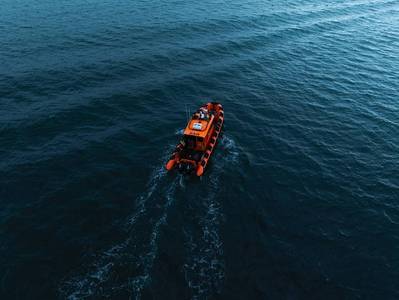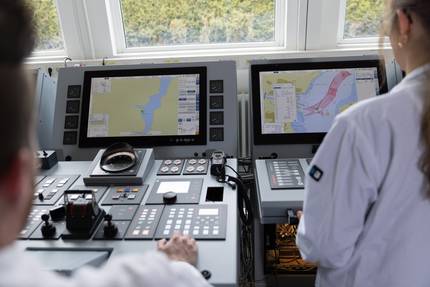Hefring Marine Introduces IMAS as a Solution to Whole Body Vibrations at Sea
For maritime personnel operating high-speed vessels, crew transfer vehicles, and small working boats, whole body vibrations (WBV) are more than just an uncomfortable part of the job, they represent a significant occupational hazard with both immediate and long-term health implications. These vibrations, transmitted through the hull, deck, seat, or floor to the crew, can lead to chronic health issues, reduced performance, and compromised safety at sea.
As maritime operations continue to evolve with faster vessels and more demanding schedules, the need for effective WBV management has never been more critical. Hefring Marine addresses this challenge with its Intelligent Marine Assistance System (IMAS), which can be used to help detect, monitor, and mitigate the harmful effects of whole body vibrations in maritime environments.
WBV in maritime settings stem from multiple sources working in combination. According to Dr. Magnús Þór Jónsson, CTO and Co-Founder of Hefring Marine, the primary causes include:
- Hull-impact and slamming
- Propeller-induced vibrations
- Engine and machinery operation
- Wave motion and sea state
- Structural factors
- Exposure duration
The effects of WBV on maritime personnel are both immediate and cumulative. In the short term, exposure can cause:
- Physical discomfort and fatigue
- Muscle strain and lower back pain
- Impaired balance and coordination
- Reduced alertness and increased risk of operational errors
More concerning are the long-term health implications of prolonged exposure:
- Chronic lower back disorders and spinal degeneration
- Joint and disc damage
- Permanent musculoskeletal injuries
- Circulatory and gastrointestinal problems
- Decreased concentration and cognitive function
Research conducted among Icelandic sailors and former U.S. Coast Guard personnel revealed alarming patterns of chronic pain in the knees, lower back, and shoulders among those who operated smaller high-speed vessels. Veterans who frequently engaged in high-speed pursuits reported requiring medical treatment and surgeries related to their injuries, highlighting the serious impact of WBV exposure over time.
Not all maritime operations face equal WBV risk. Certain vessel types and operational conditions create particularly severe exposure scenarios:
- High-speed planning craft
- Small fishing vessels, pilotage boats, and crew transfer vessels (CTVs)
- High-risk operational scenarios
The risk is compounded when vessels carry passengers who aren't experienced mariners, such as technicians aboard CTVs, who may be more susceptible to the effects of WBV.
Introducing IMAS
Hefring Marine's IMAS represents an advancement in maritime safety technology. IMAS combines sophisticated sensor technology with intelligent analytics to provide real-time monitoring and actionable guidance for vessel operators.
The system integrates with existing vessel infrastructure to deliver continuous monitoring of motion parameters that contribute to WBV exposure, including vertical impacts, wave slamming, and prolonged vibration patterns. By processing this data against established safety thresholds, IMAS can alert operators when conditions approach dangerous levels and recommend appropriate adjustments.
IMAS® employs a comprehensive approach to WBV management that spans detection, analysis, and mitigation:
- Detection
- Analysis
- Mitigation
One of IMAS's features is its ability to provide immediate, actionable insights to vessel operators. The system continuously monitors key parameters and alerts operators when thresholds are approached or exceeded, presenting recommendations through an intuitive interface.
The system also offers performance benchmarking capabilities, allowing operators to measure their performance in real-time and after trips. This feature enables continuous improvement and helps identify training needs or operational adjustments that can further reduce WBV exposure.
Beyond real-time guidance, IMAS provides post-mission reporting that highlights:
- Periods of elevated vibration exposure
- Operator behavior and performance benchmarks
- Environmental conditions contributing to high WBV levels
Over time, the system builds historical profiles of vessel behavior and environmental conditions, enabling:
- Benchmarking between vessels or operators
- Training support for improved navigation strategies
- Data-driven improvements in vessel design and shock mitigation technologies
Regulatory standards and compliance challenges
The maritime industry faces several regulatory standards designed to protect personnel from excessive WBV exposure. The European Union's Physical Agents (Vibration) Directive 2002/44/EC sets specific limits:
- The Exposure Action Value (EAV) of 0.5 m/s², at which employers must take steps to reduce vibration exposure
- The Exposure Limit Value (ELV) of 1.15 m/s², which must not be exceeded under any circumstances
Additionally, the ISO 2631-1 standard provides guidance on measuring and evaluating human exposure to WBV. However, maritime operators often struggle to comply with these standards due to:
- Unpredictable sea states and weather conditions
- Vessel design limitations
- Lack of consistent onboard measurement systems
- Limited awareness and training among operators
- Practical difficulties in retrofitting older vessels with shock mitigation technology
Hefring Marine continues to enhance IMAS through ongoing research and development. The system's modular design allows for continuous improvement and the addition of new features as technology evolves and understanding of WBV improves.














